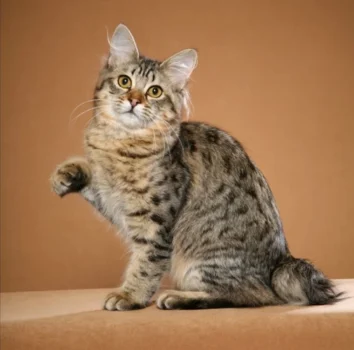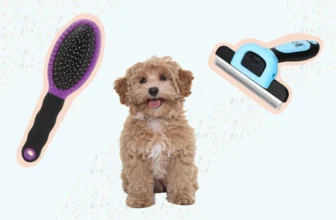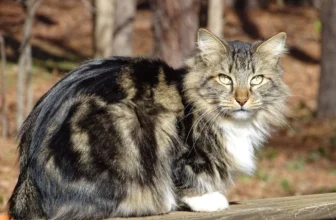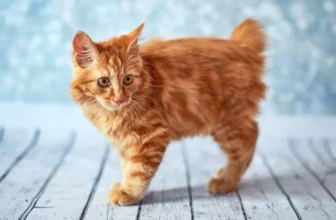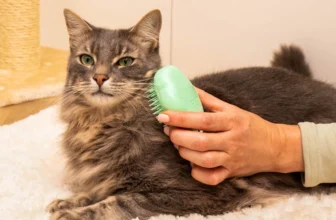As a proud owner of an American Bobtail, you may have found yourself wondering, “How Often Should I Bathe My American Bobtail?” It’s a common question among pet parents, and the answer may not be as straightforward as you think. Your furry friend’s coat type, activity level, and underlying health issues all play a role in determining the frequency of their bath time. In this article, we’ll explore the different factors you should consider and provide you with step-by-step guidelines for bathing your American Bobtail. So, put on your pet parent hat and let’s dive in!
Factors to Consider
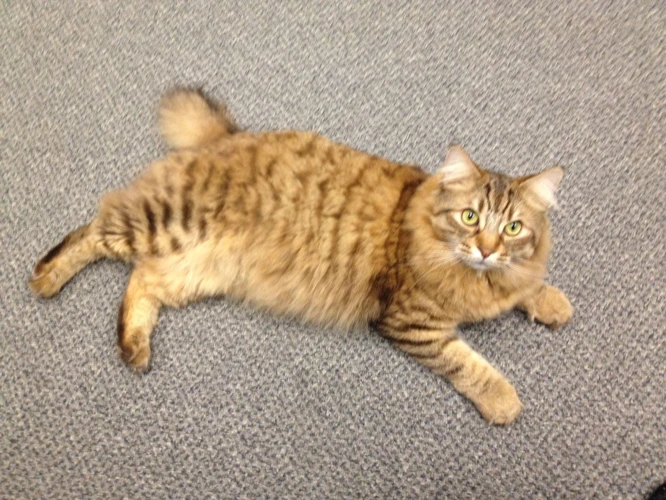
When it comes to bathing any pet, there are many factors to consider to ensure their health and happiness. This is especially true for American Bobtails, who have unique characteristics that may require different bathing techniques. The following are some important factors to consider before giving your American Bobtail a bath: their coat type, activity level, and any health issues they may have. By taking these factors into consideration, you can ensure that the bathing process goes smoothly and your furry friend stays happy and clean. If you are looking for the best shampoos for American Bobtails, check out our guide on the topic.
Type of Coat
When it comes to deciding how often to bathe an American Bobtail, it’s important to consider the type of coat they have. American Bobtails have a short to medium coat that is thick and water-repellant. This means that they do not need to be bathed often as their coat can self-clean to some extent. However, this is also different from cat to cat and their lifestyle, whether they spend most of their time indoors or outdoors.
Short-Haired American Bobtails typically have an easier grooming routine, as their coat requires less maintenance compared to their long-haired counterparts. They usually need a bath once every two to three months. However, it’s important to note that individual cats can be different, and some cats may need more frequent bathing if they have health issues or if they have rolled in something particularly smelly.
On the other hand, Long-Haired American Bobtails need more frequent grooming, which includes bathing. They usually require bathing once every two months. Grooming is crucial to ensure that their coat remains healthy and prevent mats or tangling. Regular brushing can help remove any dirt, loose hair or debris on their fur, which can also lessen the chance of hairballs.
It’s important to remember that different American Bobtails have different coat types that require different grooming routines. If you’re unsure how often to bathe your cat or how to care for their coat, it’s best to consult with your veterinarian or a professional groomer.
Below is a table summarizing the grooming needs of American Bobtails based on their coat types.
| Cat Coat Type | Bathing Frequency |
|---|---|
| Short-Haired American Bobtails | Once every two to three months |
| Long-Haired American Bobtails | Once every two months |
If you want to learn more about the bathing process for your American Bobtail, you can check out our article on “Bathing Your American Bobtail” to ensure you do it safely and comfortably for your furry friend.
Activity Level
The American Bobtail is an active and playful breed. They love to run, jump, and play, making them an ideal pet for families with children. However, this active lifestyle also means that they get dirty quickly and require regular grooming, including bathing.
Activity level is a crucial factor to consider when deciding on how frequently to bathe your American Bobtail. Generally, if your Bobtail is more active, then they will require more frequent baths. This is because their active lifestyle will cause them to sweat more, collect more dirt and bacteria, and their coat may become dirty and matted more quickly.
If your American Bobtail spends most of their time indoors and isn’t very active, then you won’t need to bathe them as frequently. In such cases, bathing every 3-4 months should suffice. However, if your Bobtail is more active, then you might need to bathe them as frequently as once a month.
It’s essential to observe and assess your cat’s behavior to determine how often to bathe them. For example, if they play in the garden or roll around in the grass, they may need a bath sooner than later. Indoor pets may not require frequent baths unless they develop an unpleasant odor or visible dirt on their coat.
Regular physical activity and playtime contribute to healthy physical and mental well-being and a well-groomed American Bobtail. So, it’s advisable to ensure your cat is physically healthy and active to maintain a healthier coat.
The activity level of your American Bobtail is an essential factor to consider when deciding on how frequently to bathe them. Regular physical activities leave your cat’s coat dirtier than a cat sitting indoors all day. If you have an active cat, you may need to bathe them once a month. However, if you have an indoor cat, you may only need to bathe them every 3-4 months.
Health Issues
When it comes to bathing your American Bobtail, it is important to consider any health issues they might have. Depending on the condition, different bathing practices may need to be implemented in order to keep your cat healthy and happy.
1. Skin Conditions: If your American Bobtail suffers from certain skin conditions such as eczema, psoriasis, or dermatitis, it is important to consult with a vet before giving them a bath. Harsh chemicals found in some cat shampoos may irritate the skin and worsen the condition. In such cases, a medicated shampoo may be required for bathing.
2. Allergies: If your cat has allergies, it is important to use a hypoallergenic shampoo that does not contain any harsh chemicals or fragrances that may trigger an allergic reaction. Consult with your veterinarian on what type of shampoo would be best for your cat’s allergies.
3. Ear Infections: If your American Bobtail is prone to ear infections, it is important to keep their ears dry during the bathing process. Use a cotton ball to gently clean their ears before the bath, and place a cotton ball inside to prevent water from entering the ear canal. Be sure to dry their ears thoroughly after the bath to avoid any potential infections.
It is crucial to take your cat’s health issues into consideration when bathing them. Remember that improper bathing practices can worsen pre-existing conditions and lead to further health concerns. To learn more about the proper techniques for bathing your American Bobtail, check out our article on the importance of drying techniques or the common mistakes to avoid.
Guidelines for Bathing an American Bobtail
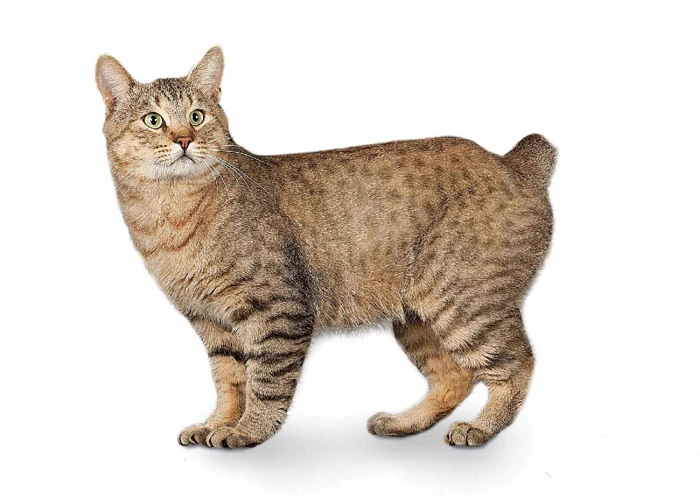
As a cat owner, ensuring proper grooming practices for your American Bobtail is important for their health and overall well-being. Bathing is one of those essential grooming practices that can help to maintain healthy skin and coat. However, improper bathing techniques can cause distress to your feline friend. It’s important to know the guidelines for safely and efficiently bathing your American Bobtail. Let’s explore the steps you need to take to give your furry friend a successful bath. Before we begin, it’s important to consider a few factors that may affect how often your American Bobtail needs a bath. You can read more about these factors in the next section below.
Brushing and Trimming
Brushing and trimming your American Bobtail’s coat is an essential part of keeping it clean and healthy. Regular brushing helps to remove loose fur, dirt, and mats that can accumulate in the coat. It also helps to distribute natural oils throughout the fur to keep it shiny and healthy.
Brushing: It’s recommended to brush your American Bobtail’s coat at least once a week, but depending on the length and thickness of their fur, more frequent brushing sessions may be needed. Use a soft-bristled brush or a comb to gently work through the fur, starting at the head and moving towards the tail. This will help to remove any tangles or mats that have formed. A good brushing session also helps to prevent hairballs from forming in your cat’s stomach, which can cause intestinal blockages.
Trimming: Trimming your American Bobtail’s nails is also an important part of maintaining their health and hygiene. Overgrown nails can cause pain and discomfort when walking or jumping. To trim your cat’s nails, use sharp cat nail clippers and clip just the very tips of each nail. Avoid trimming too close to the pink part of the nail, as this is the sensitive quick and can bleed if cut.
Regular brushing and trimming can also help you identify any potential health concerns, such as lumps or skin irritations that may require further attention. Brushing before bathing can help to prevent mats from forming during the bath. For more information on the importance of brushing your American Bobtail before bathing, check out our article on the importance of brushing your American Bobtail before bathing.
Preparing for the Bath
Before giving your American Bobtail a bath, there are some steps you should take to ensure that the process goes as smoothly as possible. Proper preparation can mean the difference between a calm and cooperative kitty and one that’s running around like crazy in a panic.
First, gather all the supplies you’ll need. You don’t want to be running around the house trying to find things while your cat is waiting in the tub. A list of the supplies you’ll need is shown in the table below:
| Supplies | Why You Need Them |
|---|---|
| Cat shampoo | To clean your cat’s fur |
| Bath towel | To dry your cat when the bath is over |
| Non-slip mat | To help your cat feel secure in the tub |
| Cup or pitcher | To pour water over your cat’s body |
| Cotton balls or pads | To clean your cat’s face and ears |
| Hair dryer | To dry your cat’s fur more quickly |
| Scissors | To trim any mats or tangles before the bath |
Note: If you want to make your own cat shampoo, you can find a recipe here.
Next, set up the bathing area. Make sure the tub or sink is filled with a few inches of warm water before you bring your cat into the room. Place the non-slip mat in the bottom of the tub or sink to give your cat some traction. You may also want to cover the drain with a piece of cheesecloth or nylon stocking to prevent any fur from clogging the drain.
Lastly, trim any mats or tangles in your cat’s fur using a pair of scissors. This will make it easier to clean your cat’s fur and prevent further matting. Make sure to brush your cat thoroughly before the bath to remove any loose fur or debris.
By following these preparation tips, you can help ensure that your American Bobtail stays calm and cooperative during the bath. For more tips on bathing a Bobtail kitten, check out our article on Bobtail Kitten Bath Tips.
Bathing Process
After preparing your American Bobtail for the bath, it’s time to actually wash them. Here are the steps to follow during the bathing process:
- Wet your cat’s coat: Using lukewarm water, wet your American Bobtail’s entire coat thoroughly. Make sure that the water is not too hot or too cold, as this can cause discomfort or even harm to your cat.
- Apply shampoo: Apply a small amount of cat shampoo to your cat’s coat, taking care to avoid the eyes, ears, and mouth. Gently massage the shampoo into their coat, paying attention to areas that are particularly dirty or greasy.
- Rinse thoroughly: Once the shampoo is applied, rinse your cat thoroughly with lukewarm water. It’s important to remove all of the shampoo from your cat’s coat, as any residue can cause skin irritation or allergic reactions.
- Condition if necessary: If your American Bobtail has a longer coat, or their fur tends to become dry or tangled, you may need to use a conditioner. Apply a small amount of cat conditioner to the fur, leave it on for a few minutes, and then rinse thoroughly.
- Dry your cat: After rinsing, use a towel to gently pat your American Bobtail dry. If they’ll tolerate it, you can also use a blow dryer on a low setting to help dry their fur. Be sure to hold the dryer an appropriate distance from your cat and avoid using high heat as this can damage the fur and burn your cat’s skin.
- Reward your cat: Finally, be sure to reward your American Bobtail for their good behavior during the bath. Offer them a tasty treat or a favorite toy to show them that they’ve done well.
Following these steps will ensure that your American Bobtail is clean and comfortable after their bath. Remember that every cat is different, and may require more or less frequent bathing depending on their individual needs.
Towel Dry and Blow Dry
After your American Bobtail’s bath, it is important to dry them off to prevent them from getting cold or developing skin issues. Here are the steps to properly towel dry and blow dry your American Bobtail:
Towel Dry:
1. Use a large, absorbent towel to remove as much water from your American Bobtail’s coat as possible.
2. Gently squeeze and pat their fur, starting from the top of their head and working your way down their body.
3. Be careful not to rub or tug on their fur as this can cause tangling and matting.
4. Use a separate towel for their face to avoid getting water in their eyes or ears.
5. Change the towel as needed so it stays absorbent.
Blow Dry:
1. Set your blow dryer on a low heat and speed setting. High temperatures and wind speeds can damage your American Bobtail’s fur and cause discomfort.
2. Keep the dryer at least 6 inches away from their skin and hair, and move it around continuously to avoid concentrating heat in one spot.
3. Use a slicker brush (a brush with short, fine wire bristles) to help evenly distribute heat and prevent tangling.
4. When blow drying, start from the head and work your way down the body.
5. Avoid blowing directly into their face or ears, as this can cause discomfort and may even damage their hearing.
Remember, it’s important to make sure your American Bobtail is fully dry before they go outside or go to sleep. Damp fur can lead to skin irritation or hot spots, and also make them more susceptible to catching a cold.
When to Seek Professional Help
As a cat parent, it’s important to know when your American Bobtail needs professional grooming help. While occasional shedding is normal, excessive hair loss or matting can be a sign of an underlying health issue that requires the attention of a veterinarian. If you notice bald patches, scabs, or other skin irritations on your cat, it’s important to seek professional help immediately as these could be symptoms of allergies, parasites, or infections.
Additionally, if you’re uncomfortable bathing your cat or if they become agitated during the bathing process, it may be wise to seek help from a professional groomer. They have the experience and training to handle your cat safely and effectively, while minimizing your cat’s stress levels.
Remember, while grooming your cat at home can be a fun bonding experience, it’s important to put your cat’s health and safety first. If you notice anything out of the ordinary, don’t hesitate to seek professional help. Your cat will thank you for it!
Conclusion
In conclusion, it’s important to keep your American Bobtail clean and groomed in order to maintain their overall health and happiness. However, there is no one-size-fits-all answer to how often you should bathe your cat. It is important to take into account all of the factors that we discussed, such as the type of coat, activity level, and any potential health issues.
Regular brushing and trimming can go a long way in keeping your American Bobtail clean, and should be done on a consistent basis. If you do choose to bathe your cat, it is important to follow our guidelines to ensure a safe and effective process.
In most cases, you only need to bathe your American Bobtail a few times a year, with spot cleans as needed. However, if you notice any changes in your cat’s coat or skin, or if they are experiencing any discomfort or health issues, it’s important to seek professional help from a veterinarian.
Remember, the most important thing is to pay attention to your cat’s individual needs and habits, and to provide them with the care and grooming they need to live a happy and healthy life. By following our guidelines and taking these factors into consideration, you can ensure that your American Bobtail stays clean, comfortable, and well taken care of.
Frequently Asked Questions
How often should I bathe my American Bobtail?
The frequency of bathing an American Bobtail depends on several factors such as coat type, activity level, and overall health. Generally, it is recommended to bathe them every 3-4 months.
What kind of coat does an American Bobtail have?
An American Bobtail has a dense, shaggy coat that does not mat easily.
How can I maintain my American Bobtail’s coat?
Regular brushing and trimming can help maintain your American Bobtail’s coat. Brushing at least once weekly can remove dead hair and prevent matting.
What if my American Bobtail has a skin condition?
If your American Bobtail has a skin condition, consult with a veterinarian on how often to bathe them. They may recommend a medicated shampoo or a specific bathing routine.
How should I prepare for my American Bobtail’s bath?
Make sure to gather all necessary bathing supplies, such as shampoo, towels, and a brush. Trim your American Bobtail’s nails beforehand and brush their coat to remove any tangles.
What type of shampoo should I use for my American Bobtail?
Use a mild, cat-specific shampoo to avoid irritating their skin. Avoid using human shampoos or harsh chemicals.
How should I dry my American Bobtail after a bath?
Use a large towel to dry them off gently. You can also use a blow dryer set to a low heat setting, but make sure to keep it a safe distance from their skin and avoid their face and ears.
What are some signs that my American Bobtail needs professional grooming?
If your American Bobtail’s coat is heavily matted, has skin irritations or infections, or if their nails are overgrown, they may need professional grooming.
Can I bathe my American Bobtail outside?
Bathing outside is not recommended as it can cause stress and discomfort for your American Bobtail. Choose a warm, quiet indoor space to bathe them.
How can I make bathing a positive experience for my American Bobtail?
Make sure to use a calm, reassuring tone of voice, and reward them with treats and plenty of affection after the bath. This will help them associate bathing with positive experiences.

